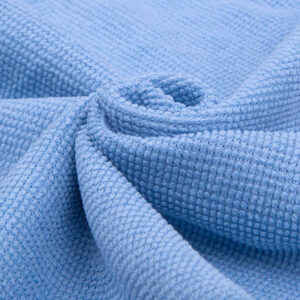The origin of microfiber could be traced back to the rayon era of the two-component composite fiber (conjugate fiber) of the two-phase structure of imitating wool fiber in the 1940s. The first to use synthetic fibers to successfully make composite fibers practical is still the United States DuPont. This method uses side-by-side compounding to make the fibers self-crimp.
From 1962 to 1965, Japanese companies such as Toray, Kanebo, Teijin, and Kuraray used their own methods to develop special multi-layer structured spinning methods and stripping methods, successfully manufacturing unique microfiber. For example, various composite fibers such as multi-core, wood grain, radial, and hollow radial have been developed.
In the late 1970s, artificial silk fabrics and ultra-high-density fabrics using microfiber continued to appear. Toray was inspired by the analysis of natural fibers, and developed the technology to manufacture very uniform fibers with the limit of slenderness. The fiber manufactured by this technology is called the polymer mutually aligned fiber. At that time, the fiber was well received in the country, and a few years later, it was highly praised at the Paris International Exhibition.
After entering the 1980s, the good properties of microfibers have been welcomed by the public, forming today’s artificial suede fever.
After the 1990s, many international companies have launched fine denier filaments such as polyester, polyamide, polyacrylonitrile and polypropylene. At the same time, terms such as “fine fiber”, “fine fiber” and “superfine fiber” have also appeared. However, there is no unified definition of fine fiber in the world.
In recent years, the Japanese chemical fiber industry generally refers to fibers with a monofilament density lower than 0.3 dtex as microfiber. In addition, because ultrafine fibers have developed into a major indicator of the competitiveness of the fiber industry in the future, and because composite ultrafine fibers have properties different from conventional fibers, their products have many unusual characteristics, and they have entered many Application areas. Among the main fiber products in the world, microfibers have attracted the most attention. The countries and regions that mainly produce microfiber are Japan, the United States, China, and Western Europe.
